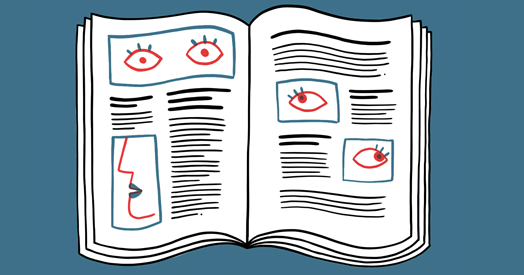Test of repetitive behaviors adapted for adults with autism
A new questionnaire provides a standardized measure that allows researchers to reliably track repetitive and restricted behaviors over time.
A new questionnaire provides a standardized measure that allows researchers to reliably track repetitive and restricted behaviors in adults with autism over time1.
Most current tests for repetitive behaviors are designed for children. Questions are directed toward caregivers and include references that don’t apply to adults. For instance, a questionnaire called the Repetitive Behavior Questionnaire-2 (RBQ-2) asks: “Does your child have any special objects he/she likes to carry around?” using toys or a blanket as examples.
In the new study, published 9 July in the Journal of Autism and Developmental Disorders, researchers rephrased the RBQ-2’s questions so that adults with autism can complete the questionnaire themselves. For instance, one of the rephrased questions is: “Do you have any special objects you like to carry around?” The 20-item questionnaire, called the Repetitive Behavior Questionnaire-2 for adults, or RBQ-2A, does not refer to toys or play.
The researchers first tested their questionnaire on 163 university students without a diagnosis of autism, to gauge how repetitive behaviors are distributed in the general population. Some of the participants reported repetitive or restricted behaviors, such as fiddling with objects or reading a book repeatedly. But overall, repetitive behaviors in this group were mild.
The researchers used a mathematical method to divide the questions into two subcategories based on the answers of the adults. One reflects repetitive motion, such as rocking back and forth, and the other captures a person’s tendency to adhere to precise routines or interests, such as eating the same things again and again. This separation allowed the researchers to generate scores that reflect different types of repetitive behaviors.
The researchers then gave the questionnaire to 29 adults with autism and 37 controls. Adults with autism have significantly more severe repetitive behaviors than controls do, the researchers found. Their scores are higher for routines than for repetitive motions.
The adults also completed the Autism Spectrum Quotient, a measure of social deficits and other symptoms of autism. Adults who show more repetitive behaviors exhibit more autism symptoms on this report, the researchers found.
By providing reliable data on the frequency of repetitive behaviors in adults, the new questionnaire, which is available online, may allow researchers to better understand how these behaviors change throughout life in people with autism.
References:
Recommended reading

Prosocial effects of oxytocin are state dependent; and more

Contested paper on vaccines, autism in rats retracted by journal
Explore more from The Transmitter


